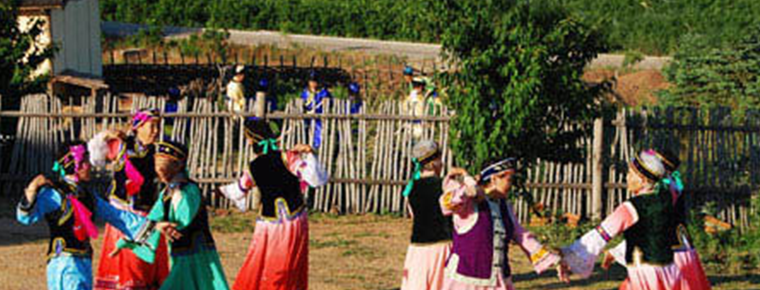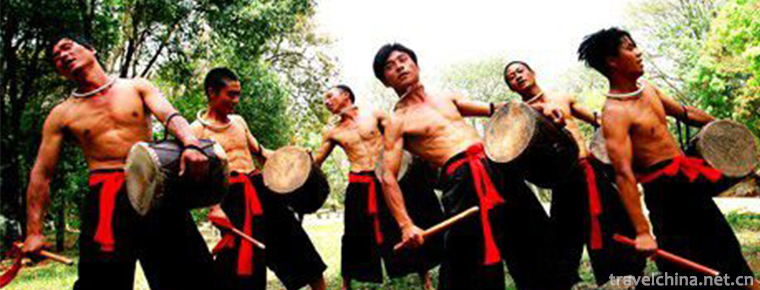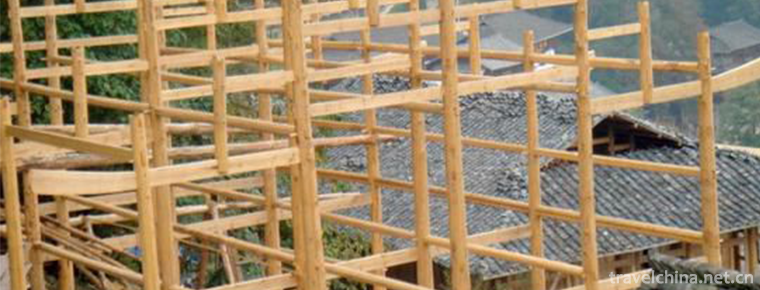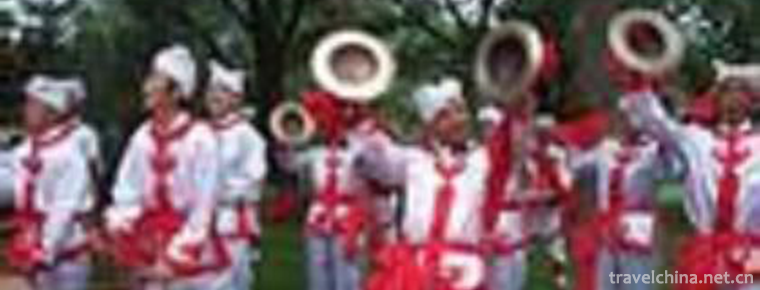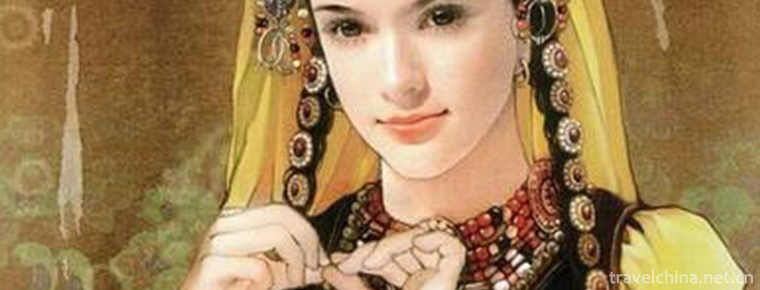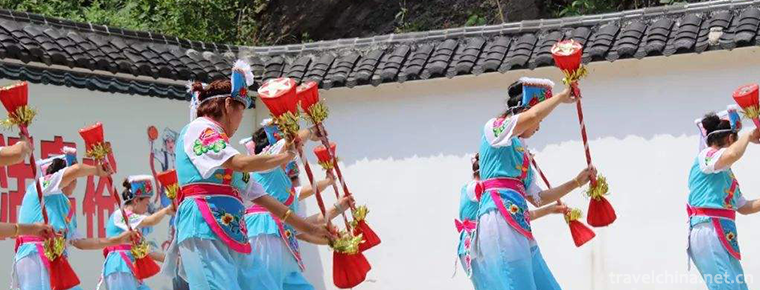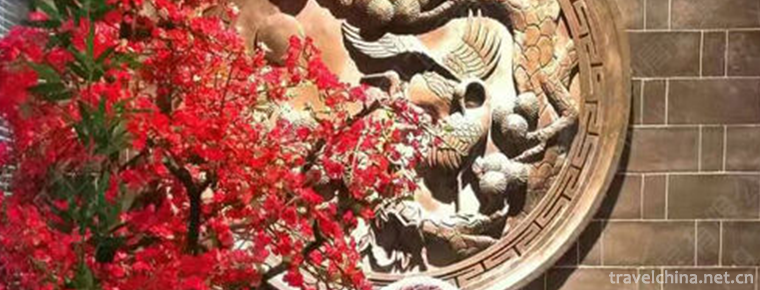Water Encouragement
Water Encouragement
Water drum dance is a kind of popular dance spread between the De'ang and Miao nationalities. It combines water, drum and dance to worship ancestors, pray for good weather and peace in villages. However, the dance methods of De'ang and Miao nationalities are somewhat different.
On November 11, 2014, Water Drum was listed in the fourth batch of national intangible cultural heritage list with the approval of the State Council.
type
De'ang nationality
De'ang ethnic group is a special ethnic group in Yunnan Province of China, and it is also a transnational ethnic group. The De'ang people in China mainly live in Luxi County, Dehong Dai Jingpo Autonomous Prefecture, and Zhenkang County, Lincang District, in southwestern Yunnan Province. Ruili, Lianghe, Longchuan, Baoshan, Yongde, Gengma, Lancang and other counties also have a small distribution.
De'ang nationality is one of the earlier and more accepting Chinese culture in ancient times. Since the Yuan, Ming and Qing Dynasties, Dai people have been in close contact with each other, especially the common belief in Hinayana Buddhism. Therefore, they are deeply influenced by Dai culture.
Water drum dance is a dance of the De'ang ethnic group. When dancing, drums are hung around the neck, drummed in front of the body, beating while dancing, accompanied by big pills and cymbals. The drums were deep and solemn. It can be inspired by diving alone or everyone can follow the rhythm of the water drum.
Miao Water Drum
Water drum dance is a kind of traditional dance danced by the local Miao people in the water during the unique water drum dance festival in Da Man Wu Village, Gedong Town, Jianhe County, Guizhou Province. It is called "zuk Niel eb" in Miao language, which means stepping on drums. EB means water.
"Water drum dance" is a kind of mass dance for Miao people to worship ancestors and pray for good weather and peace in villages. Miao people's "water drum" is the most unique primitive national dance found in our country, dancing in water. With its bold dancing style and profound national cultural connotation, Miao people's "water drum" has been praised as the "living fossil" of national primitive dance by experts and scholars at home and abroad. The performance of "Water Drum Encouragement" integrates sound, water and mud, and deduces exciting dance style and drum rhyme, which gives audiences endless visual impact and aesthetic enjoyment.
Modern percussion program
The 2008 Beijing Olympic Games have fulfilled the centuries-old Olympic dream of the Chinese people. Beijing Phoenix Orchestra continuously excavates, inherits and innovates, combines traditional Chinese culture and art with modern fashion visual art, creates water drum, crystal drum, tosses and turns water cube, Yingdong swimming pool, weightlifting hall, Basketball Hall and other Olympic venues, performs more than 100 performances, cheers for Olympic athletes, and witnesses the birth of China's first gold medal. It is highly appreciated by the IOC and praised by international friends.
Water drum is a combination of sound, light and water scenery. It integrates exciting music, inspiring rhythm, splashing water with passion, graceful dancing posture and infinite glamour of lighting. It deduces a brilliant and exciting dance style and drum rhyme, which gives audiences endless visual impact and aesthetic enjoyment. It fully reflects the Chinese nation's growing, exploring, innovating complex and endless group. Physical and mental outlook.
Draft Encouragement at noon
History
According to word-of-mouth information and literature research, the Water Drum Festival has a history of at least five or six hundred years. It is said that after a long year of drought and no rain, an old grandfather named Yizhong in a night village dug a well in the place where he started to drum today. Unfortunately, he was buried in the collapsed soil. He entrusted his dream to his children and said, "This place is very good. Let me sleep here for a long time." The children took perfume paper and went to the grave to pay a memorial service. Then the dew was poured down and became popular in the future. Another legend is that in a year of severe drought, the river was cut off, and only where the foot of the village started to drum today, there was a pool where the children would go to play, but when they saw two dragons fighting in the pool, it rained heavily, then they could relieve their urgency and become a festival.
Water Drum Festival
The Water Drum Festival is held in two parts. Every year, on the first ugly day after the first third day of June in the lunar calendar, a drum-raising ceremony, such as the opening ceremony, is held. People bring wine, meat, duck, perfume paper and so on to the riverside. After the sacrifice, men wear women's clothes and skirts, wear castor clothes, straw boots or barefoot in the river while stepping on drums, drinking and eating meat, while ironing water and throwing mud to play. The women were singing aloud on the Bank of the river to cheer them up. On the second ugly day, all the men, women and children of the village stepped on drums in the dam beside the village, and the people of dozens of neighboring villages came to participate. The activity lasted for three days, during which the aunt had to return to her uncle's house to congratulate her on her duck and wine gifts. The cultural connotation of water drum dance and water drum dance festival includes the following aspects: the reflection of water culture and drum culture of Miao nationality. According to the description of Miao's Creation Epic "Miao's Epic" and expert textual research, water is the source of the world in the traditional philosophy of Miao. The original residence of the Miao ancestors is in the Yellow River and the middle and lower reaches of the Yangtze River, which are close to rivers, lakes and seas, and there is deep water worship. The reason why the Miao people stepped on drums in the water at noon is that the water culture tradition of the Miao people and human beings can not live without water. Drum is the "heavy weapon" of Miao people, and is considered as the place where ancestors'souls live. The Miao people's epic "Searching for wooden drums" says that only by offering sacrifices to the drums can they become more prosperous. In particular, it is worth noting that the drum culture of Draft afternoon is different from that of other nearby Miao villages, where there is no taboo "white drum Tibet", while many of his villages are "black drum Tibet", which is not allowed to play drums and step on drums casually in the year of non-drum club sacrifice. At the same time, among the traditional concepts of many Miao communities, there are Taboos between spring sowing and autumn harvest, not blowing Lusheng, not tapping timber drums, and stamping on drums during afternoon in other communities, reflecting her unique drum culture. Particularly noteworthy is the combination of drum and water, which has become the unique water drum culture among the Miao nationalities in the whole country and rare among other nationalities. Miao rice culture reflects. Rice, cotton and maple are the "three treasures" of Miao plants, and rice ranks first. The local Miao people have formed a relatively complete rice culture. From the Han literature and archaeological data, the rice culture of Miao ancestors has a long history. In Qing Dynasty, Epida recorded in Volume XIII of Qiannan Zhilue that "Miao people only eat glutinous rice" in the area of Taijiang and Jianhe rivers. Da Man Wu is located in the central area of the Qian Mu Dam in Gedong. It has always lived on rice and held water-inspired June of the lunar calendar, which is the key season for rice packing and grouting. If water is scarce, it will directly affect the harvest and the food security of villagers. Therefore, the Miao people here choose to hold water-inspiration festival in this critical period to pray for universal rainfall and ensure the right of rice. Often grow. The legends of the two sources of water drum, both with the theme of praying for rain, reflect the long history of Miao farming culture. The reflection of Miao primitive worship. According to the Miao Epic, Leigong is in charge of "rain" in the sky, so when water encourages sacrifice, the main worshiper should shout: "Rain, Leigong!" Legend has it that when the Dragon hits, the water waves are not happy. Once it turns over, it rains heavily. When it beats drums and dances in the water, it will rain if it is startled. It is said that every time the water drum activities are held, thunder will be thunderous and rain will fall, which is the manifestation of the Miao people's worship of thunder and dragon (nature). In daily life, the Miao people worship not only the common ancestors, but also the ancestors of their tribes, clans and even families. In the first legend of the source of water drum, the Miao people specially narrated the details of the dew which was poured down by the heaven after the sacrifice of the ancestor Gong Gaoyizhong. From this we can see the "information" of ancestor worship. The embodiment of unity education in Miao community. Every time during the Draft Encouraging Event, village administrative organizations or famous elderly people should call on each household to actively contribute public sacrifices such as perfume paper, wine, meat and so on to offer sacrifices at the riverside, and every household should send people to participate. This activity effectively promotes the unity of the village and strengthens the cohesion. During the festival, the surrounding people will also gather to participate in activities such as stamping drums, relatives and friends will also bring gifts to congratulate, like a family; in the old days, there were horse racing, singing, bullfighting and other activities, but now there are basketball games, sometimes less than 10,000 people, more than 20,300,000 people, effectively promoting the unity between villages. The reflection of Miao traditional calendar culture. The Miao people have created a unique calendar system in their history. According to the study of Miao's Epic, Casting Sun and Making Moon, it is found that the Miao people once practiced the twelve-hour period. The Water Drum Festival is held every year on the first ugly day after the first third day of June of the lunar calendar. The second ugly day is a grand drum stamping activity, which fully reflects the practical role of the traditional Miao calendar. So in Guizhou Province intangible cultural heritage representative works list, water drum festival was included in the "season of the year".
Dance
On October 31, 2009, Jianhe Miao "Water Drum" won the gold medal in the final of the 5th CCTV TV Dance Competition Group. The reason why "Water Encouragement" won such a high award is that besides the excellent performances of actors, her profound cultural connotation is also an important reason for winning the championship.
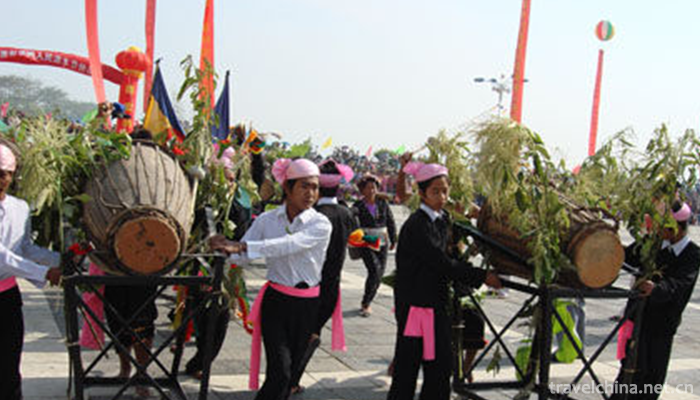
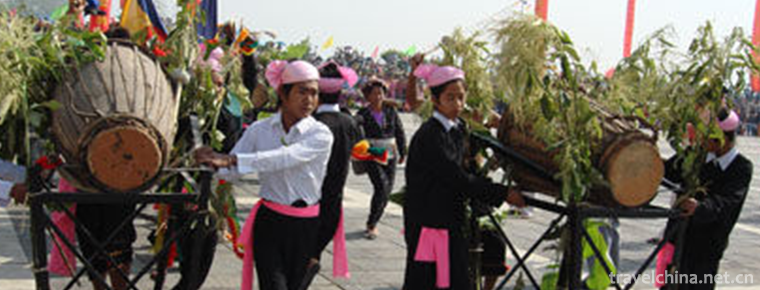
Water Encouragement
-
Daur Ruzhigle Dance
"Luzhigle" is a representative folk dance of Daur nationality. It varies from place to place, including "Alhambo", "Langtudabe", "Hakumai", "Hagen Melger&q
Views: 135 Time 2019-04-22 -
Hubei storytelling
The evaluation of books in Hubei Province is a traditional art of rap and singing in Hubei Province. Popular in northern China, as an independent variety of storytelling,
Views: 192 Time 2019-05-03 -
Drum dance
Hani rhythm and drum dance is a kind of sacrificial dance of Hani people on the traditional festival "Onmatu". The dance is vigorous and bold, vigorous, simple and free, showing the same per
Views: 72 Time 2019-05-23 -
Construction Techniques of Miaozhai Diaojiao Building
Miaozhai hanging-feet building is evolved from the form of "nest dwelling". It is built with bamboo and wood. The lower part of the building is hollow. It is called "semi-dry fence"
Views: 131 Time 2019-06-05 -
Daoism in Northern Shaanxi
As one of the traditional folk songs in northern Shaanxi, Daoqing in northern Shaanxi was originally called "Qingjian Daoqing". Later, because "Longdong Daoqing" and "Shenchi
Views: 181 Time 2019-06-13 -
Tajik costumes
Tajik costume refers to the costume with distinct ethnic characteristics of Tajik. Tajik people mainly live in the Pamir Plateau with cold climate. Their economic life is mainly animal husbandry and a
Views: 347 Time 2019-06-17 -
Encouragement of Sangzhi Battle
Sangzhi Bai people's fighting drum is mainly distributed in seven Bai villages and towns, such as Mahekou, Maidiping, Furong Bridge, Hongjiaguan, Zoumaping, Linxi River and Liu Jiaping. In other half
Views: 435 Time 2019-07-25 -
Brick carving
Brick carving refers to the carving of landscape, flowers, figures and other patterns on green bricks. It is an important art form in ancient architectural carving. The production technology and core
Views: 265 Time 2019-08-10 -
Beijing Language and Culture University
Beijing Language and Culture University, established in 1962 under the personal care of Premier Zhou Enlai, is a university directly under the Ministry of Education of China. In June 1964, it was name
Views: 233 Time 2019-09-22 -
Chunqiu Temple
Chunqiu temple, also known as Chunqiu pool and Chunqiu Pavilion, is located in Yandian street, Xuyong county (Xuyong town), Luzhou City, Sichuan Province. It is mainly dedicated to Guan Sheng emperor. It is said that Guan Yu likes to read the biography of the left family in the spring and Autumn period, so it is named Chunqiu temple.
Views: 249 Time 2020-10-15 -
Main scenic spots in Luzhou
Located in Luzhou city. It was built in the 18th year of Shaoxing in the Southern Song Dynasty (1148), in the year of Hongzhi of Ming Dynasty (1488-1505), in the 14th year of Guangxu of Qing Dynasty (1884) and in 1985, and has been well preserved.
Views: 108 Time 2020-12-14 -
Plant resources in Guangan
The forest vegetation in Guang'an City belongs to the vegetation area of evergreen broad-leaved forest and coniferous broad-leaved mixed forest in the middle subtropics. Gymnosperms include Pinaceae, Cupressaceae, Ginkgo biloba and Metasequ
Views: 311 Time 2020-12-19
